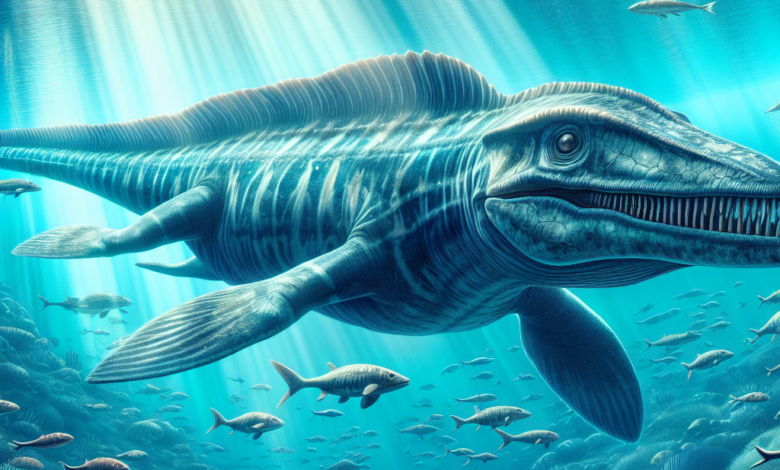Incredible Ichthyosauria: The Discovery of the Largest Marine Reptile

Incredible Ichthyosauria: The Discovery of the Largest Marine Reptile
A groundbreaking discovery of a gigantic marine reptile has recently been made, potentially rewriting paleontological records. The ichthyosauria, a group of dominant sea predators of the Mesozoic era, welcomed a new member. This newly discovered species, fondly christened Ichthyotitan severnensis, is estimated to reach a staggering 82 feet in length, making it the largest known marine reptile to date.
The fossil, unearthed in Somerset, United Kingdom, was found in fragments across a beach between 2020 and 2022. The first chunk of the fossil was discovered by a passerby and subsequently placed atop a rock for others to examine. As of now, the remains consist of 12 fragments from a surangular bone, part of the lower jaw. The discovery of this giant ichthyosaur was made even more special as it was found by Ruby Reynolds, an 11-year-old girl, and her father during their fossil hunting trip.
Ichthyosaurs, despite being predominant in the Mesozoic era, often referred to as the Age of Dinosaurs, are not classified as dinosaurs themselves. These fascinating creatures evolved from another group of reptiles, similar to the evolutionary journey of whales from terrestrial mammals. Like whales, ichthyosaurs were air-breathing and gave birth to live young. The Ichthyotitan severnensis is believed to have lived during the end of the Triassic period, a time of intense volcanic activity and mass extinction.
Previous record holders for the largest marine reptile were other ichthyosaur species, including one found in British Columbia. However, the Ichthyotitan severnensis, standing as one of the last giant ichthyosaurs, offers scientists unique insights into the evolution and extinction of these marine reptiles. The discovery of this marine giant certainly opens up new avenues for research into prehistoric marine life and the biodiversity that once flourished on our planet.





